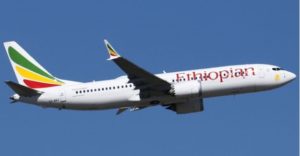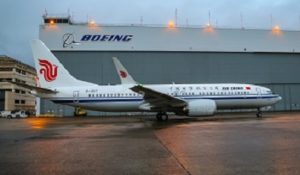IATA – rising oil prices reducing profitability
The International Air Transport Association (IATA) announced a downgrade to its industry outlook for 2012 primarily due to rising oil prices.
IATA expects airlines to turn a global profit of $3.0 billion in 2012 for a 0.5% margin. This $500 million downgrade from the December forecast is primarily driven by a rise in the expected average price of oil to $115 per barrel, up from the previously forecast $99. Several factors prevented a more significant downgrade: (1) the avoidance of a significant worsening of the Eurozone crisis, (2) improvement in the US economy, (3) cargo market stabilization and (4) slower than expected capacity expansion.
“2012 continues to be a challenging year for airlines. The risk of a worsening Eurozone crisis has been replaced by an equally toxic risk—rising oil prices. Already the damage is being felt with a downgrade in industry profits to $3.0 billion,’’ said Tony Tyler, IATA’s Director General and CEO.
Airline performance is closely tied to global GDP growth. Historically, when GDP growth drops below 2.0%, the global airline industry returns a collective loss. “With GDP growth projections now at 2.0% and an anemic margin of 0.5%, it will not take much of a shock to push the industry into the red for 2012,” said Tyler.
IATA revised upwards its estimated profits for 2011 to $7.9 billion from the previously forecast $6.9 billion. This was primarily owing to the much better than expected performance of Chinese carriers.
All regions will see reduced profitability in 2012 compared to 2011, and Europe and Africa will see losses.
• European carriers by far face the most difficult situation among the regions. The outlook remains unchanged from December with the expectation of a $600 million net loss and an EBIT margin of 0.3% of revenues. While it appears that a major worsening of the Eurozone crisis has been averted, many European economies are in deep recession which will see continued weakness in both the cargo and passenger business. At the same time air travel is being hit by taxation and the cost of the EU ETS.
• North American carriers are expected to deliver a profit of $900 million, down from the previously forecast $1.7 billion. The 2.0% EBIT margin shares top position with Asia-Pacific carriers. Higher fuel costs are responsible for the downgrade, but airlines in this region will see the smallest deterioration from last year’s performance among the major regions, as a result of the very small increases in capacity expected.
• Asia Pacific carriers continue to perform well. Better than expected performance in 2011, particularly by the Chinese carriers—saw an upward revision of 2011 profits to $4.8 billion (from the previous estimate of $3.3 billion). For 2012, the region’s airlines are expected to again deliver the largest absolute profit–$2.3 billion—which is $200 million more than estimated in December. Higher fuel costs will more than halve profits this year but the region’s relatively strong economies will continue to generate more rapid growth in travel and cargo than the other large regions.
• Middle East carriers are expected to see profits of $500 million (up from the previously forecast $300 million). Financial performance was already seen to be better than previously expected in 2011, with an upgrade from $400 million to $1 billion. In the passenger business, load factors have improved by a slowdown in the introduction of new capacity, and long haul markets have been relatively robust.
• Latin American profits are expected to be $100 million, unchanged from the previous forecast. Performance is mixed across the region, but intense competition in some major markets and slowing economies will make it more challenging for the region’s airlines to recover the increase in fuel costs they face this year.
• African carriers are still expected to see losses of $100 million, unchanged from the previous forecast. Some of the region’s economies are growing strongly and generating expanding demand for air transport. However, passenger and freight load factors are very low on average for airlines in this region which will make it difficult to recover the rise in fuel costs.
IATA called for governments to take a more strategic approach to the aviation industry.
“Airlines are buffeted by many forces beyond their control. Today’s forecast demonstrates just how quickly the operating environment can change. Four months ago the biggest worry was a European financial disaster; today it is rapidly rising oil prices. Nimbleness and operating efficiency are critical to maintaining competitiveness and managing through such dramatic shifts,” said Tyler.
To survive through turbulent times and shore-up competitiveness, airlines improved labor productivity by 67%, increased fuel efficiency by 23%, and cut sales and distribution unit costs by 21% (over the decade to 2010). Despite this, even the best collective margin of the last decade is 2.9% (2007 and 2010), which does not cover the cost of capital.
“A sustainable airline industry could deliver much more to the global economy. But the unintended consequences of many government policies have contributed to keeping the industry on a knife-edge between profit and loss. Short-sighted excessive tax collection in many markets undercuts aviation’s ability to provide access to the connectivity that drives global business. Regulation implemented without a clear cost-benefit analysis often scores political points at the expense of industry efficiency let alone solving the problems it was intended to address. Failure to drive forward important infrastructure modernization projects such as NextGen and Single European Sky, limit the effectiveness of the billions of dollars that airlines are investing in more efficient and capable aircraft,” said Tyler.
“Today’s industry situation reinforces the need for governments to take a more strategic approach to aviation with competitiveness-enabling policies that will deliver broad economic benefits. This has been tried, tested and proven by many governments in Asia and the Middle East. Europe, India, the US and others should take note,” said Tyler.















